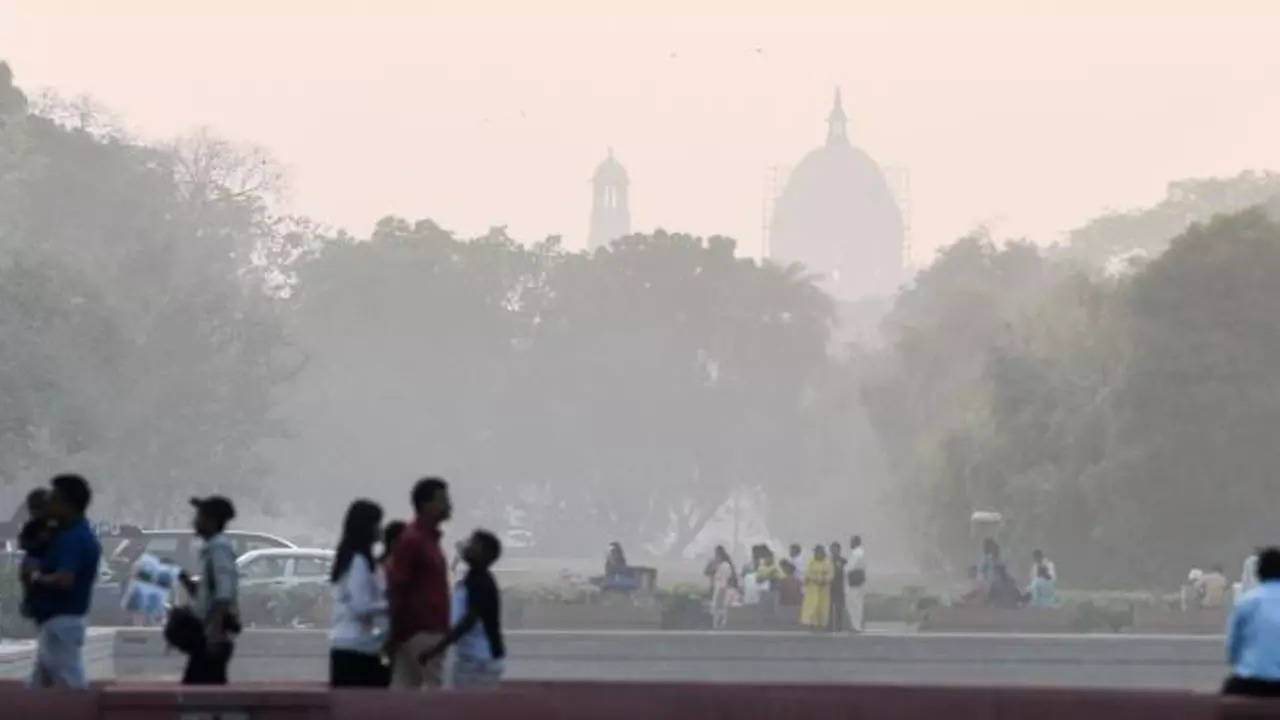The 24-hour average Air Quality Index (AQI) for the city was recorded at 261, which is a deterioration from 256 on Thursday, 243 on Wednesday, and 220 on Tuesday.
In the neighboring areas, the AQI was measured at 227 in Ghaziabad, 235 in Faridabad, 224 in Gurugram, 220 in Noida, and a higher 280 in Greater Noida.
The Air Quality Index (AQI) is categorized as follows:
0 to 50: ‘Good’
51 to 100: ‘Satisfactory’
101 to 200: ‘Moderate’
201 to 300: ‘Poor’
301 to 400: ‘Very Poor’
401 to 500: ‘Severe’
As per the Centre’s Air Quality Early Warning System for Delhi, it is anticipated that the city’s air quality will deteriorate to the ‘very poor’ category on Saturday.
‘Urged CM Kejriwal for swift action’ DPCC chairman Gopal Rai suspends air pollution study
This deterioration is primarily attributed to sluggish wind speed and a drop in temperatures.
During the winter season, unfavorable meteorological conditions, coupled with a combination of emissions from firecrackers and paddy straw burning, along with local sources of pollution, collectively contribute to the escalation of air quality to hazardous levels in Delhi-NCR.
An analysis conducted by the Delhi Pollution Control Committee reveals that the capital witnesses its peak pollution levels from November 1 to November 15, coinciding with the period when stubble burning incidents in Punjab and Haryana reach their highest levels.
As Delhi grapples with a significant decline in air quality in the upcoming days, it has come to light that crucial data, which was instrumental in assisting the government in formulating strategies to address the air pollution issue, is currently unavailable.
The ministry of earth sciences’ System of Air Quality and Weather Forecasting and Research, which previously supplied data regarding the impact of smoke from farm fires on Delhi’s air pollution, has ceased to provide updates, and officials associated with the system are unaware of the reasons behind this discontinuation.
An official from the Indian Institute of Tropical Meteorology, responsible for operating the SAFAR portal, stated, “We are not aware of why updates on the SAFAR portal have stopped.”
Likewise, data from the Decision Support System, a numerical model-based framework that was capable of identifying sources of particulate matter pollution in Delhi, is no longer accessible to the general public.
In a recent development, Delhi environment minister Gopal Rai disclosed that the city government’s study aimed at identifying pollution sources in the national capital has been unilaterally and arbitrarily halted.
This action was taken on the orders of DPCC Chairman Ashwani Kumar.
The Delhi government had introduced a 15-point action plan last month to combat air pollution in the capital during the winter season.
This comprehensive plan focused on tackling various aspects, including dust pollution, vehicular emissions, and the open burning of garbage.
The city has already initiated special drives to monitor and control dust pollution, vehicular emissions, and industrial pollution.
Continuing a practice observed over the last three years, Delhi announced a comprehensive ban last month on the manufacturing, storage, sale, and usage of firecrackers within the city.
To discourage the burning of firecrackers, a public awareness campaign titled ‘Patakhe Nahi Diye Jalao’ will be reintroduced in the near future.
The government has formulated a pollution mitigation plan for each of the 13 identified pollution hotspots in Delhi, which include Narela, Bawana, Mundka, Wazirpur, Rohini, R K Puram, Okhla, Jahangirpuri, Anand Vihar, Punjabi Bagh, Mayapuri, and Dwarka.
Gopal Rai, the Delhi Environment Minister, recently announced that the government has identified an additional eight pollution hotspots in addition to the existing 13 in the national capital. Special teams will be deployed to these new hotspots to monitor and address pollution sources.
Gopal Rai also stated that the government has made the decision to utilize suppressant powder as a measure to prevent dust pollution in the city.
Dust suppressants encompass chemical agents such as calcium chloride, magnesium chloride, lignosulfonates, and various polymers. These chemicals function by attracting and binding fine dust particles together, rendering them too heavy to become airborne, thereby mitigating dust pollution.
The Commission for Air Quality Management, a statutory body with the responsibility for proactively implementing the pollution control plan known as the Graded Response Action Plan (GRAP), recently issued directives to authorities in the National Capital Region (NCR).
These directives include raising parking fees to discourage private transport and improving the services of CNG or electric buses and metro trains in anticipation of a potential rise in pollution levels.
This action is part of Stage II of the Graded Response Action Plan (GRAP), which is implemented when Delhi’s Air Quality Index (AQI) is forecasted to enter the ‘very poor’ category.
‘There is no official data of Delhi pollution source’: Atishi’s shocking statement as AQI worsens in Delhi
GRAP classifies its actions into four stages based on the Air Quality Index (AQI) levels:
Stage I: ‘Poor’ (AQI 201-300)
Stage II: ‘Very Poor’ (AQI 301-400)
Stage III: ‘Severe’ (AQI 401-450)
Stage IV: ‘Severe Plus’ (AQI >450)
As of last month, the Delhi government introduced a 15-point action plan aimed at mitigating air pollution in the capital during the winter season. This plan places a significant focus on tackling issues related to dust pollution, vehicular emissions, and the open burning of garbage.
With agency inputs
